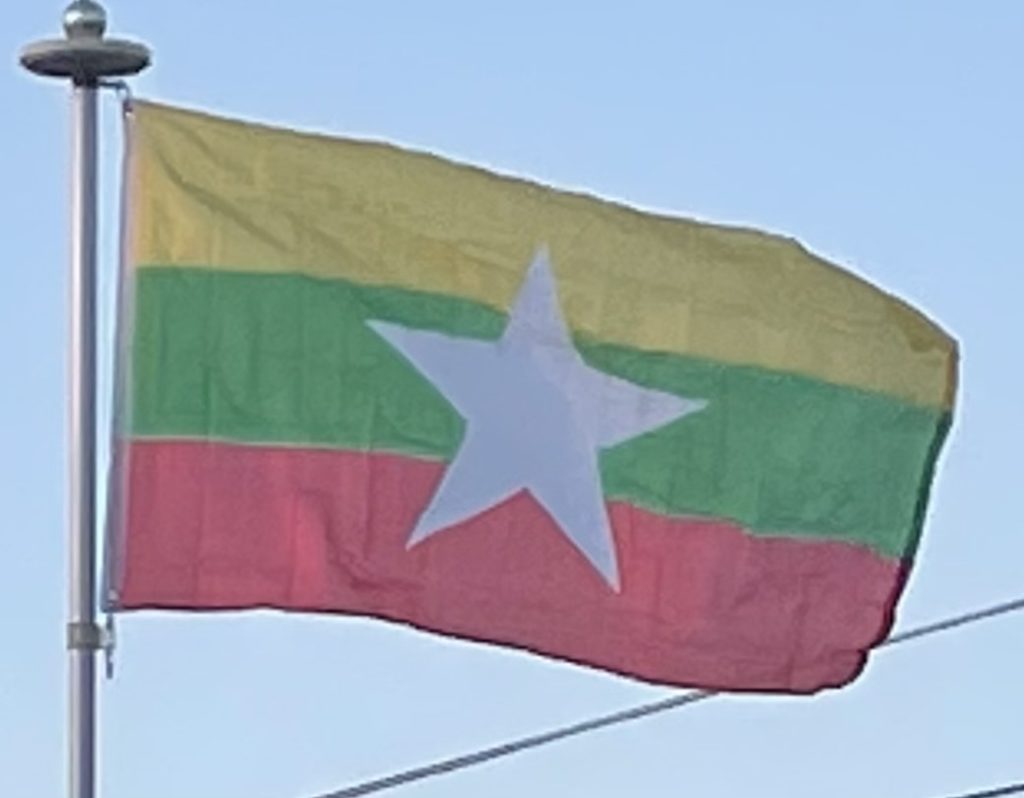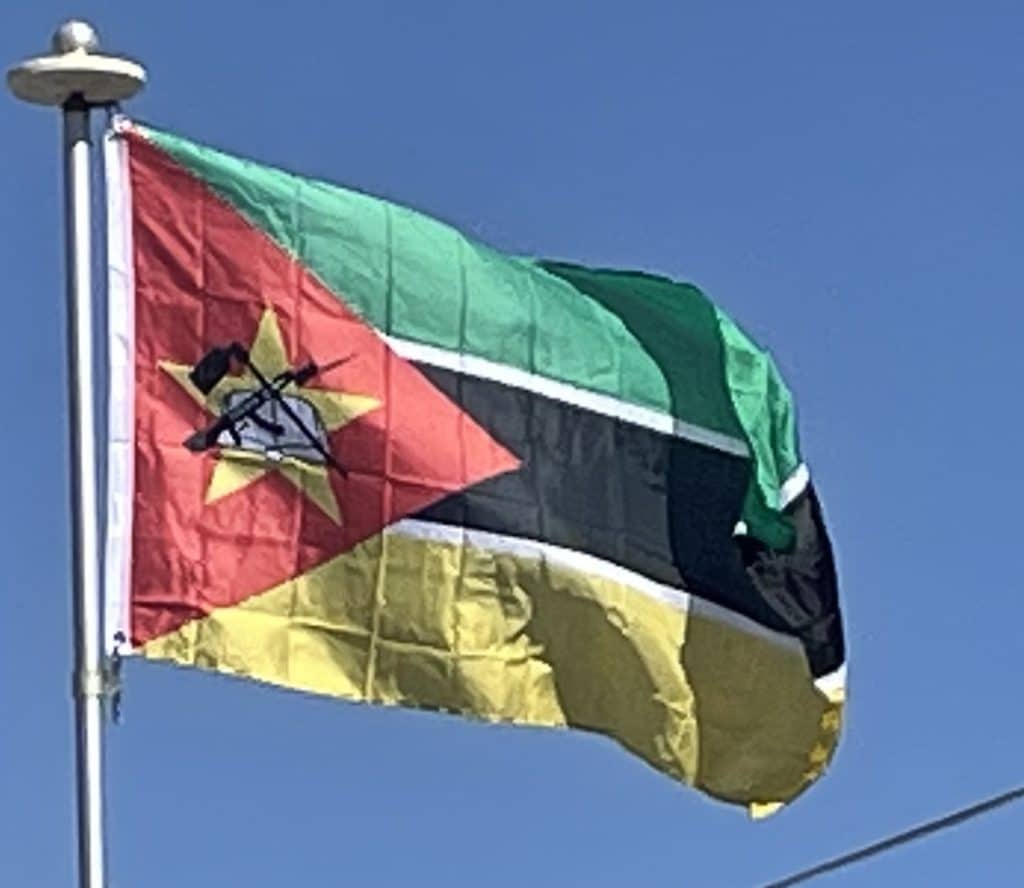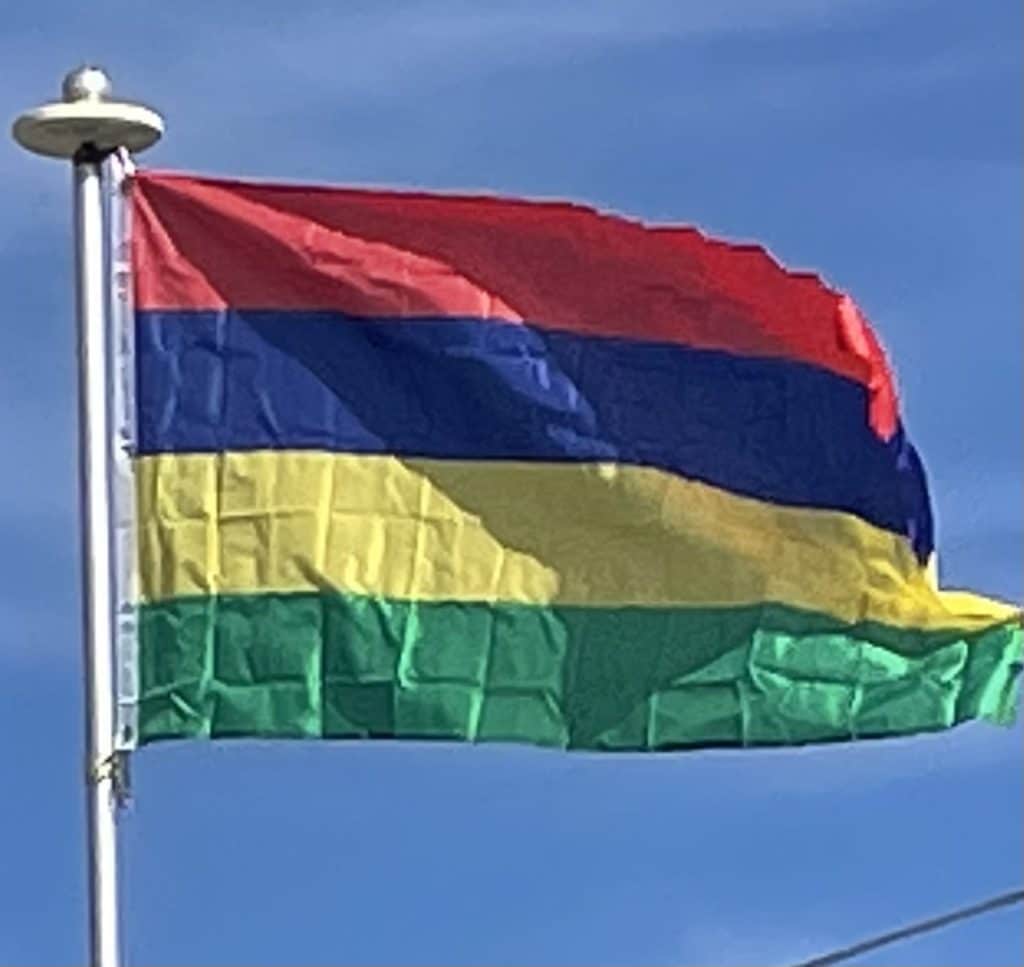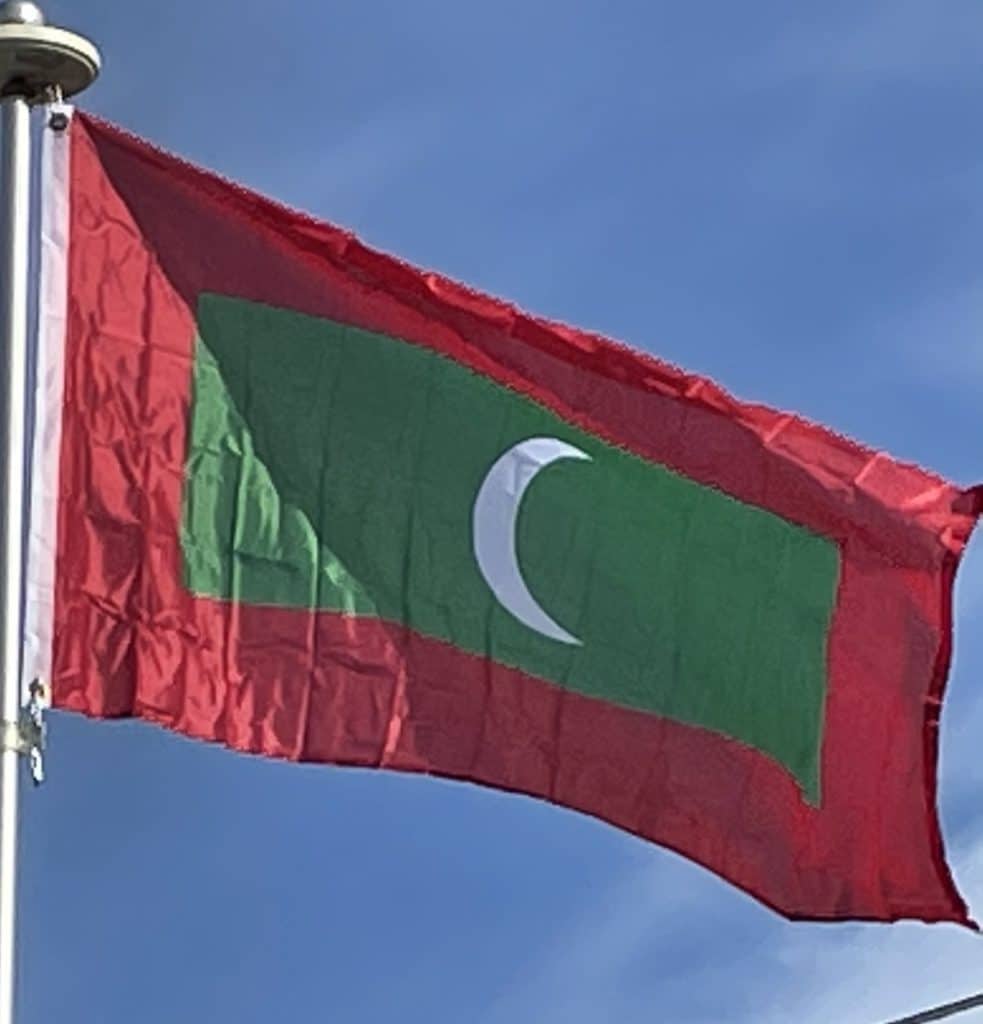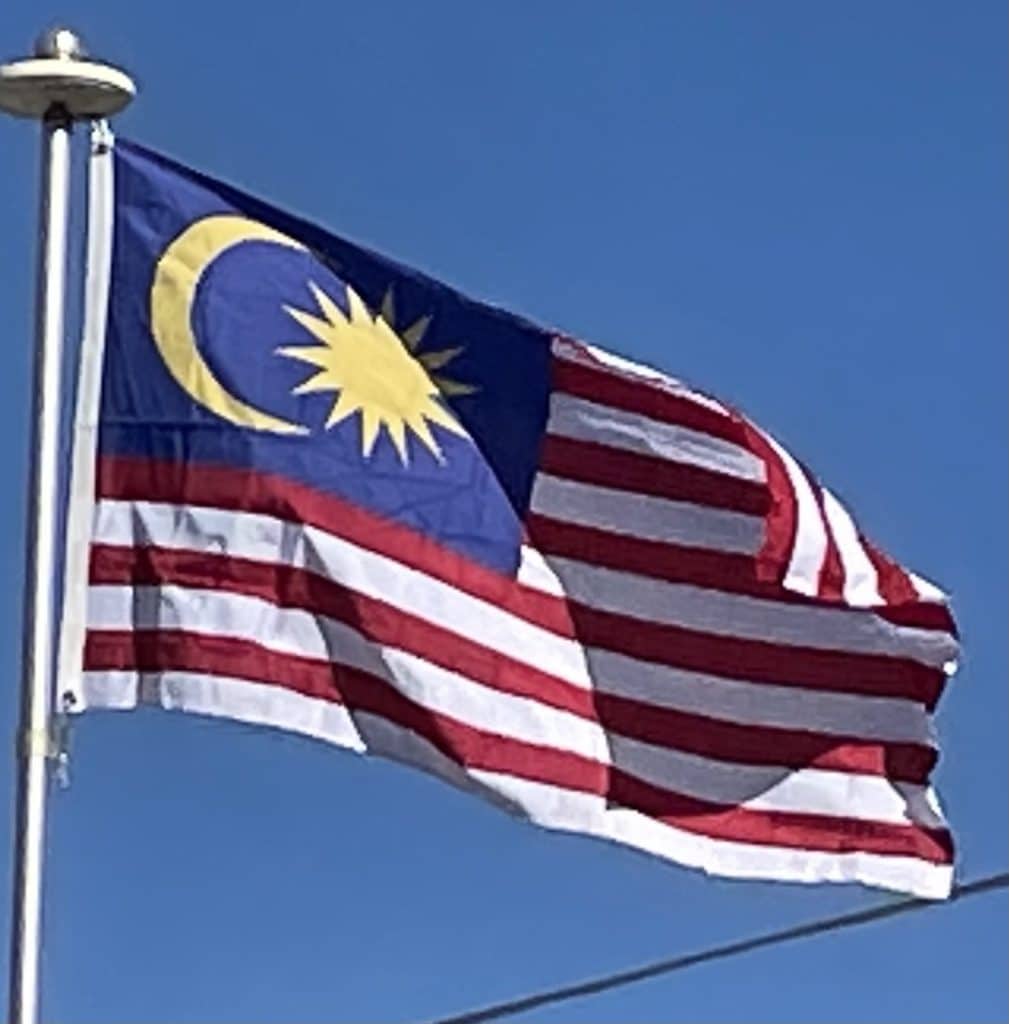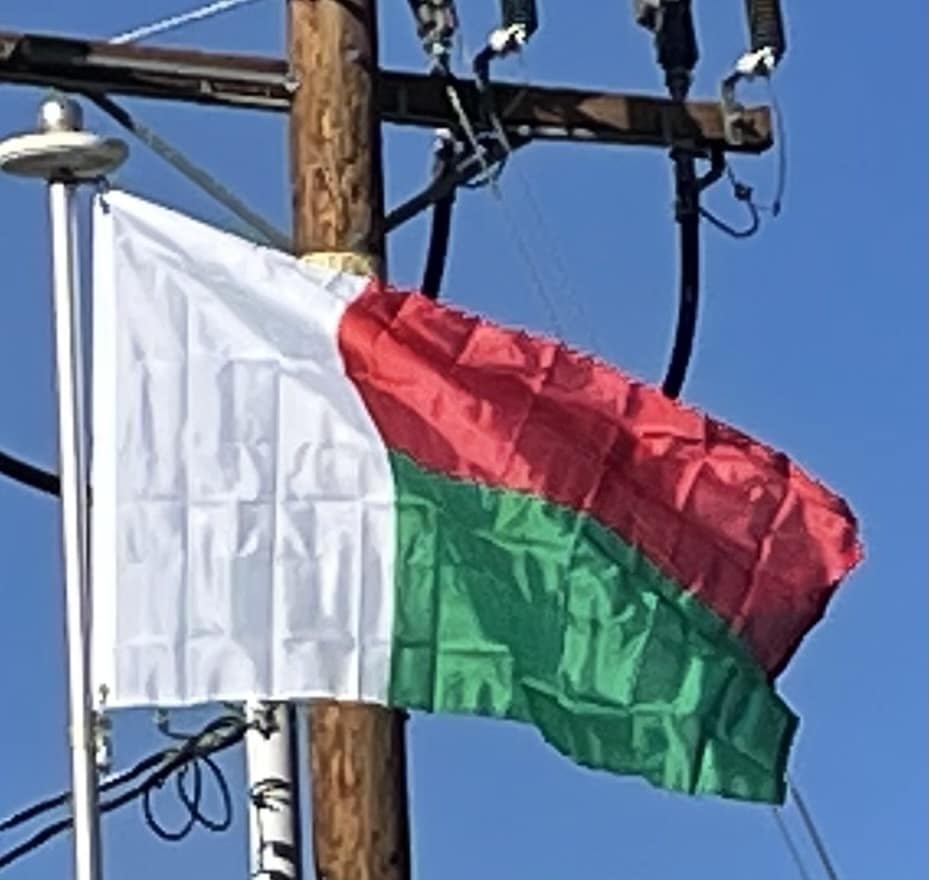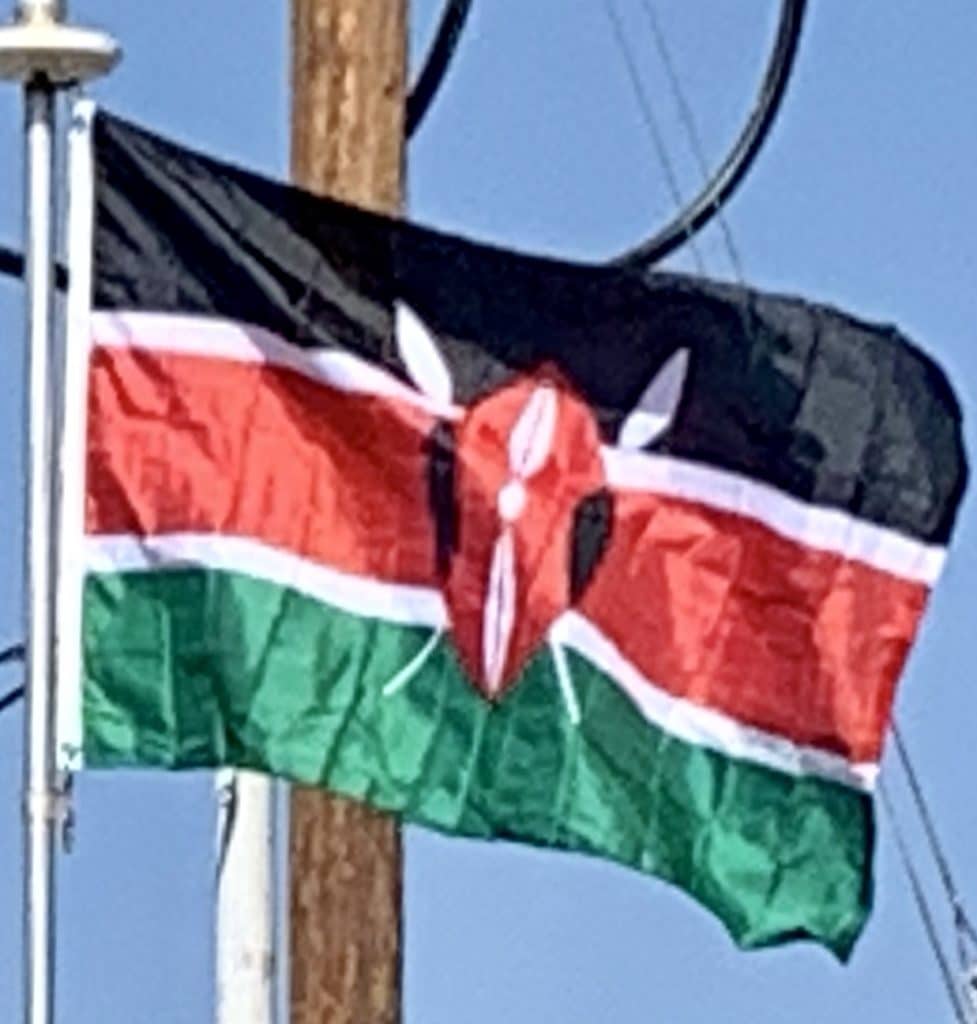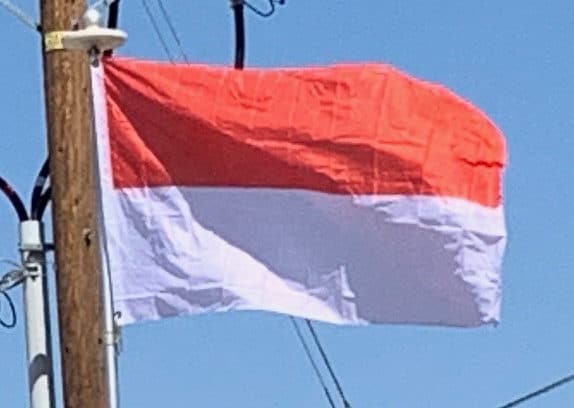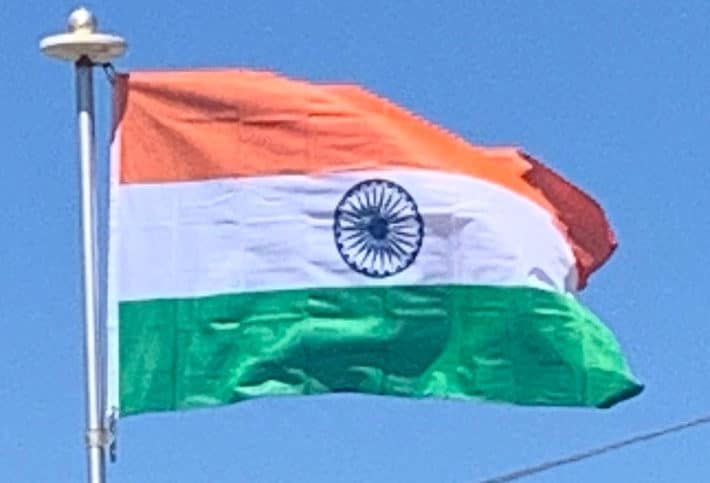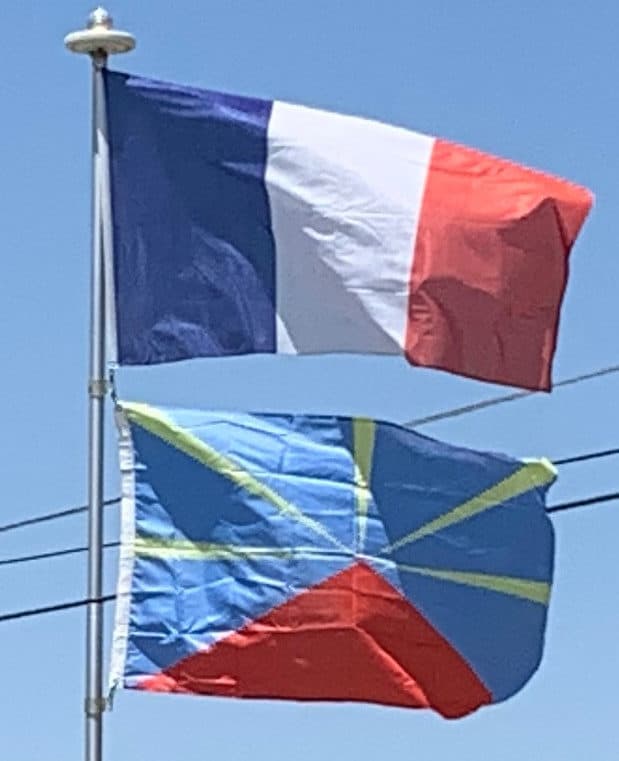The flag of Mozambique was adopted on 1 May 1983. It includes the image of an AK-47 with a bayonet attached to the barrel crossed by a hoe, superimposed on an open book. It is one of four national flags among UN member states that feature a firearm, along with those of Guatemala, Haiti and Bolivia, but is the only one of the four to feature a modern firearm instead of cannons or muskets.
Green stands for the riches of the land, the white fimbriations signify peace, black represents the African continent, yellow symbolises the country’s minerals, and red represents the struggle for independence. The rifle stands for defence and vigilance, the open book symbolises the importance of education, the hoe represents the country’s agriculture, and the star symbolises Marxism and internationalism.
The flag is based on the flag of the Mozambican Liberation Front (FRELIMO), the leading political party in Mozambique. The FRELIMO flag, used for a brief period after the country gained its independence from Portugal, looks like the current flag but lacking the emblem, with green, black, and yellow horizontal stripes separated by white fimbriations and a red triangle in the hoist.
